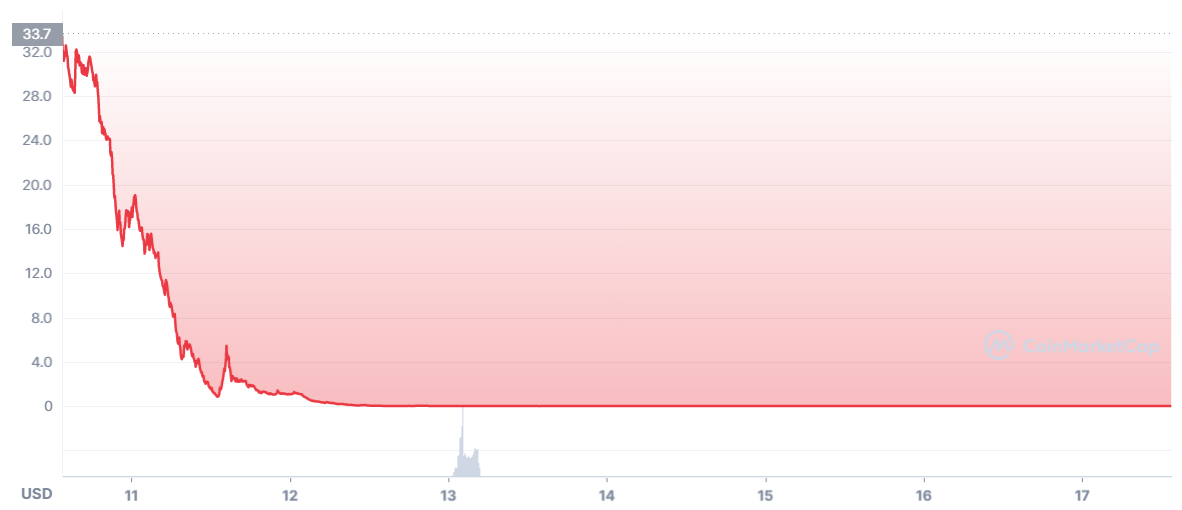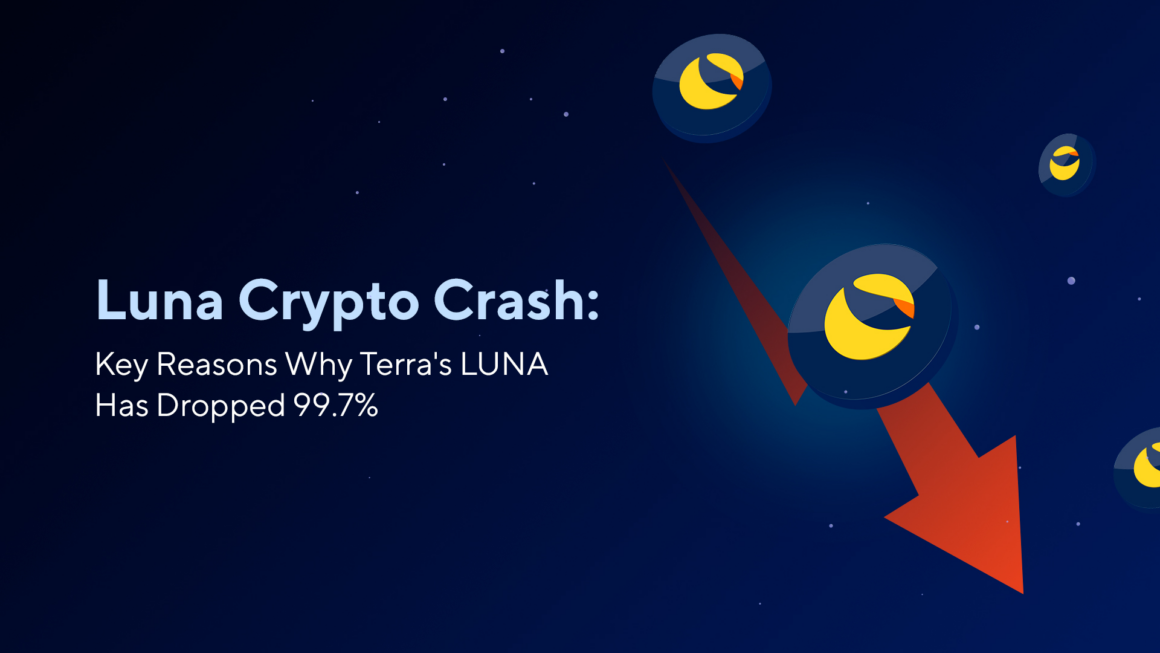In early May, most cryptocurrencies fell in price by more than 20%. However, Terra (LUNA) lost 99.99% in a week, dropping from $87.15 to below $0.01. On May 12, its associated stablecoin UST fell in price by more than 60% in 3 days. Currently, the asset is trading for $0.0001907.
The crash of one of the most popular coins destroyed the fortunes of crypto investors. Members of the TerraLuna community have declared unprecedented losses of tens of billions of dollars. To capitalize on the cryptocurrency growth, people took out loans and mortgaged houses. To support the investors, moderators of some forums have fixed messages with helplines in Europe and the United States.
Why Did Terra (LUNA) Crash?
According to analysts, the crash is associated with losing a UST peg to the dollar. The stablecoin is part of the Terra ecosystem and is pegged to the underlying fiat currency (USD) price. But unlike other stablecoins, UST has no monetary backing. An algorithm and another native network token, LUNA, are used to maintain price.
To create UST, users burn the pegged cryptocurrency for $1. And vice versa — each stablecoin can be converted into LUNA in the equivalent of $1. Under normal conditions, the price of UST fluctuated in the range of $0.99 — $1.1. Traders used this deviation to arbitrage by buying one asset at a discounted price and converting it into another.
The greater the difference with backing, the more profitable the arbitrage. On May 10, the UST fell sharply below $0.62. Then the price recovered to $0.93. But it was not possible to keep it. On the evening of May 12, the asset was worth $0.37. Thus, the stablecoin lost more than 60% of its value in a few days. Currently, the asset is trading for $0.0001907.

However, the fall of LUNA began earlier — on May 6. Within 3 days, altcoin’s price decreased from $87.15 to $60.14. A sharp drop in the rate of 98% from the April high ($119) occurred in just 24 hours, from May 10 to 11. By the evening of the next day, the coin had collapsed to almost zero and traded for $0.01.
In the Terra ecosystem, other assets supported the stability of UST. After the withdrawal of a significant part of the reserve, they also fell in price.
Community Reaction
As long as UST is trading below $1, traders have an arbitrage opportunity to burn the stablecoin and mint LUNA. Major exchanges have taken restrictive measures to slow down the sale of Terra tokens. The Binance administration has temporarily suspended the withdrawal of LUNA and UST. On KuCoin, Terra transactions are stuck indefinitely due to high network load.
On Wednesday, May 11, Do Kwon presented a plan to recoverTerra coins. The company plans to increase the issue of UST to 1.2 billion and attract investments in the amount of $1.5 to stabilize the asset. However, the attempts of developers to stop the fall of coins do not find support in the community. In social networks and on forums, users actively criticize the company and call for the return of lost investments.
The situation is aggravated by the recent information about the identity of the head of Terraform Labs (TFL). According to media reports, Do Kwon is involved in creating at least one cryptocurrency scam project. The algorithmic stablecoin Basis Cash (BAC) was launched in 2022 and turned out to be a scam in 2021, dropping from $147.96 to below $0.01. The collapse of BAC was not widely publicized. The cryptocurrency did not have much influence in the market and has managed to collect a market cap of $54.6 million. However, in 2022 history repeated itself with LUNA and UST. This time, the financial damage amounted to tens of billions of dollars.
What Happens to Other Stablecoins?
The collapse of LUNA and its pegged UST token shocked the entire cryptocurrency market. Over the past few days, increased volatility has been observed across all stablecoins. On the afternoon of May 12, USDT fell to $0.95 at some point. On the same day, DAI dropped to $0.99 and rose to $1.01. The situation is already under the control of regulators. The U.S. Securities and Exchange Commission is looking into the Terra incident and is urging the government to enact legislation to regulate stablecoins by the end of 2022.
Experts state that the collapse of LUNA and UST greatly undermined investor confidence in stablecoins. Practice has shown that the stability of secured coins remained a dead letter.
Do you invest in stablecoins? Feel free to share your experience in the comments below!

Leave a Reply